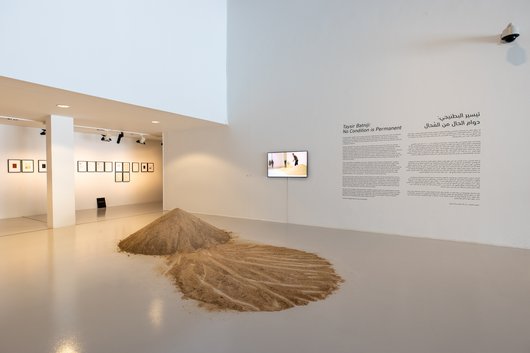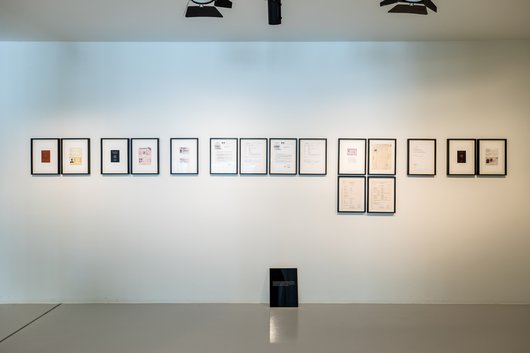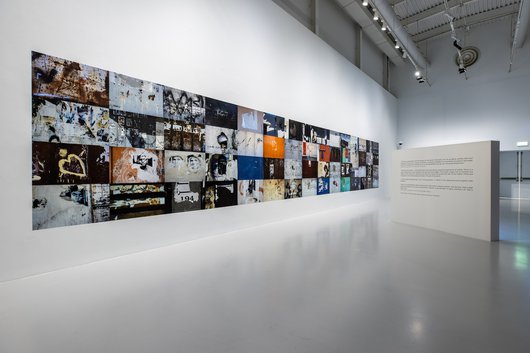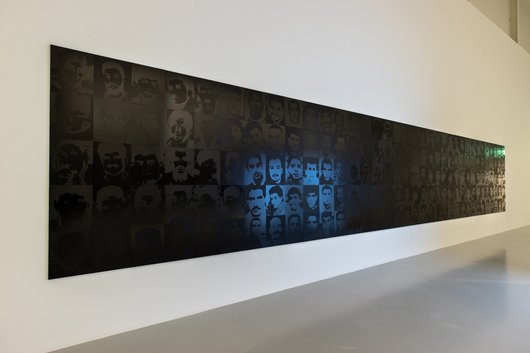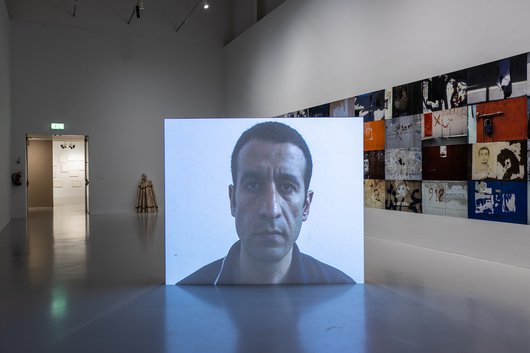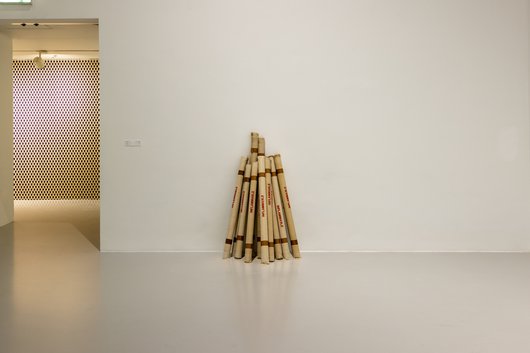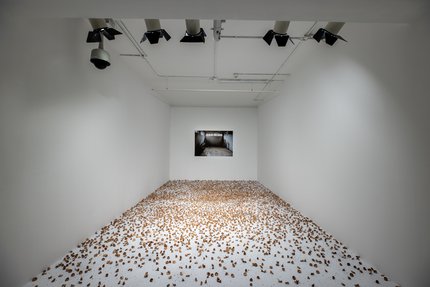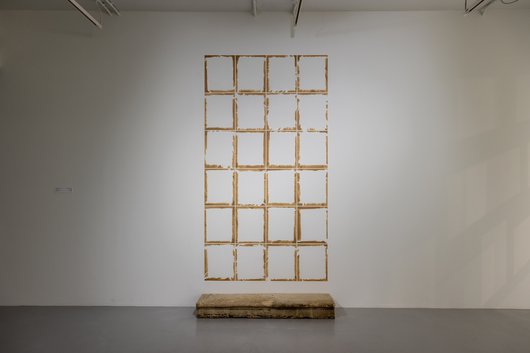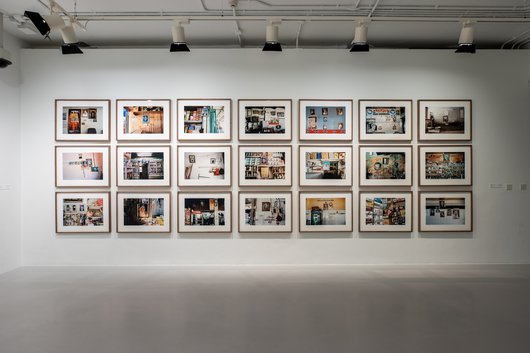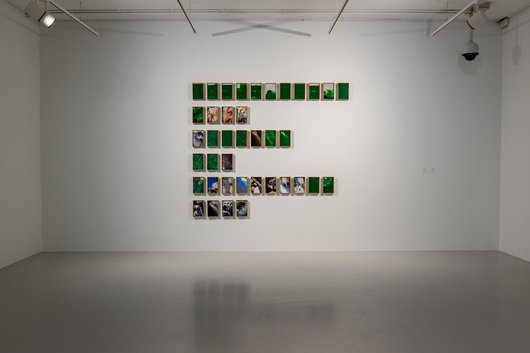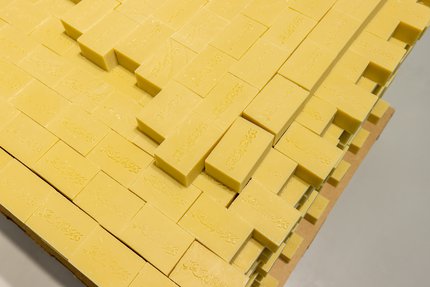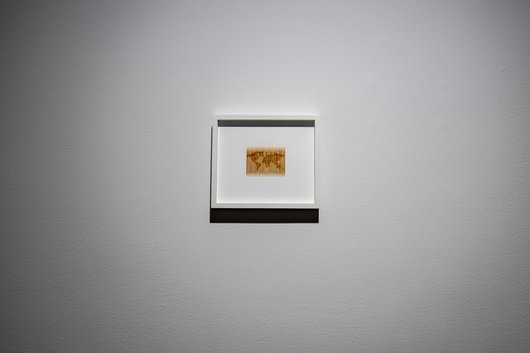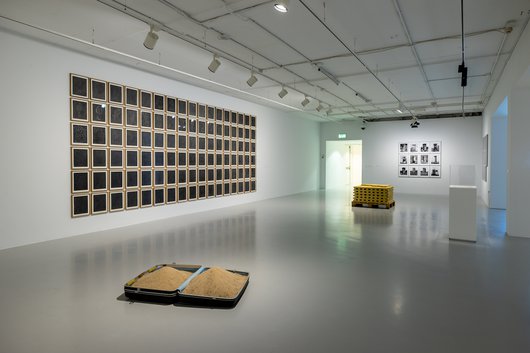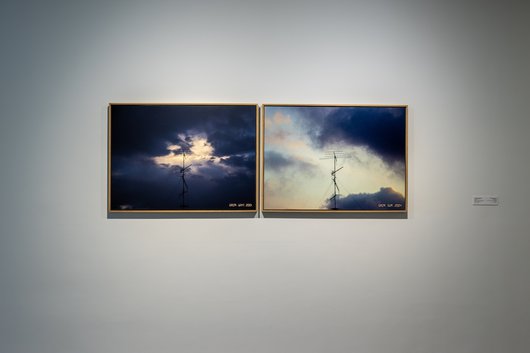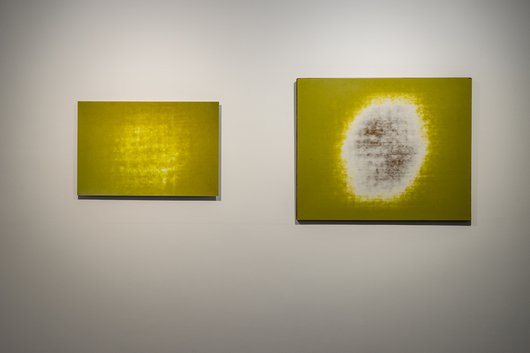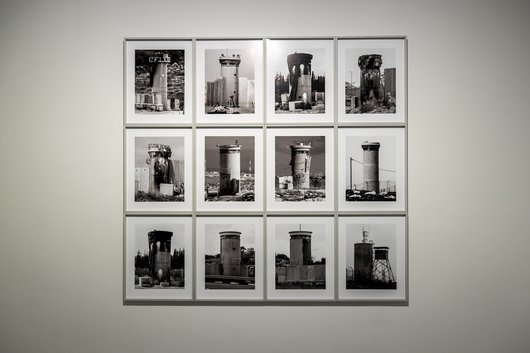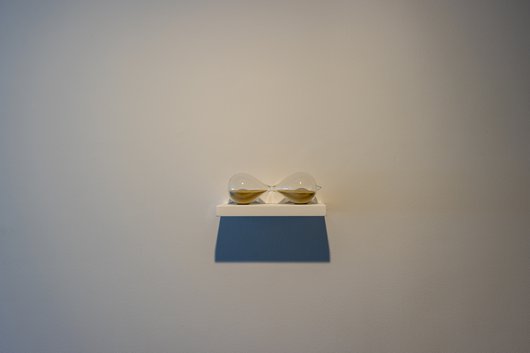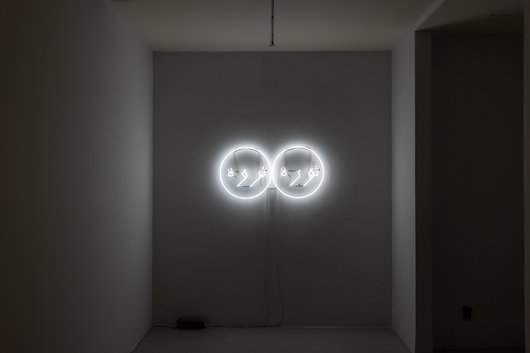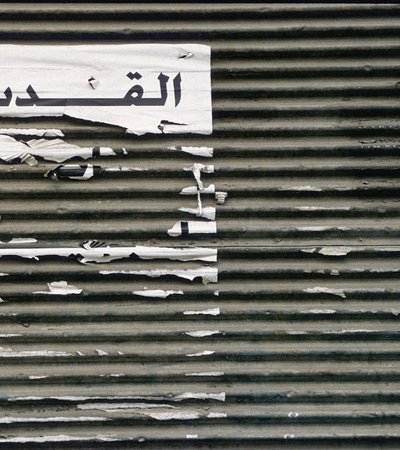The exhibition’s curatorial narrative shares a common thread relating to the fragility and the in-betweenness of forms, situations, geographies and identities, but also of the subjective and the personal. This notion is expressed in the artist’s own words about an experience he had waiting for hours at the border in Rafah (between Egypt and Palestine) in 2004 when Israel was increasing its surveillance: ‘I wanted to resist time by holding the camera, but at the same time I wanted to resist the agony of tension. My camera was the only salvation, to document what was happening as a witness… and at the same time I was not able to break free from that anguish. Time passed and what [I] could only control was waiting.’
The works in No Condition Is Permanent present multiple meanings of home, the autobiographical, and the collective, exploring how the individual can gain agency in relation to them. The viewer’s position is a critical component in the exhibition, with the layers experienced in the work inviting engagement in open dialogue, and debate. Systems become fragile when unveiled, and in doing so, the viewers’ reaction is central in defining ways of conceptualizing the shared present and future.
About the Galleries
Atrium & Gallery 1
The exhibition starts with early works by Taysir Batniji, which establish the theme of impermanence running through the rest of the show. These works explore particular situations, with a focus on the autobiographical events that influenced the life and work of the artist starting in Gaza, Palestine.
